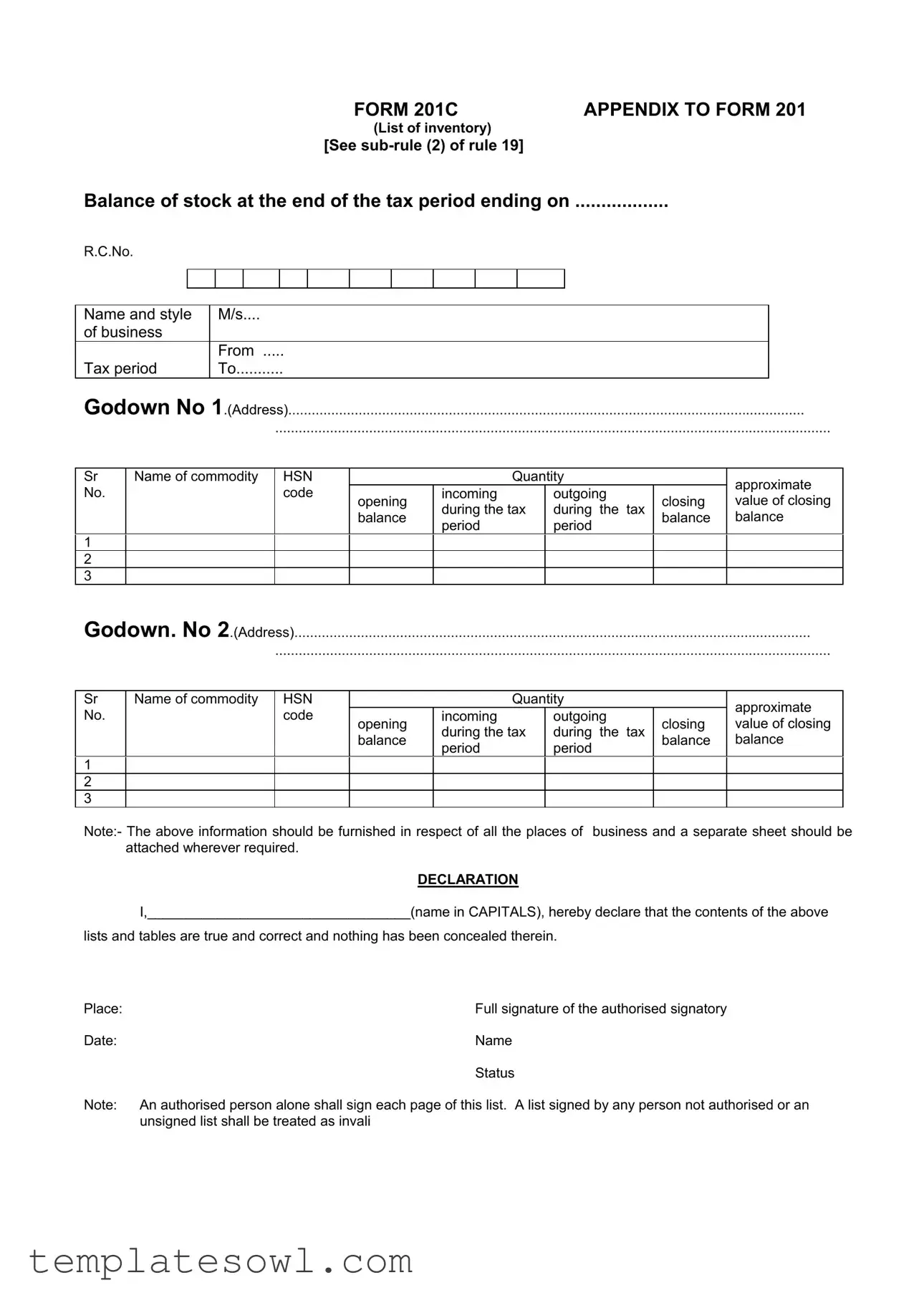Completing Form 201C can be straightforward, but many people make common mistakes that can lead to complications. Here are nine mistakes to avoid when filling out this important document.
One common error is failure to provide complete information. Each section of the form demands specific details, including the name of commodities and their corresponding HSN codes. Omitting these details can delay processing and lead to misunderstandings.
Another issue arises from incorrect entries in the quantity fields. Be sure to double-check incoming and outgoing quantities. Mistakes in these numbers can significantly skew the reported inventory levels, resulting in potential compliance problems.
People often forget to list all places of business. If your business operates in multiple locations, ensure you complete a separate sheet for each one. Incomplete submissions will be flagged and require additional time to rectify.
Signing the form poses another challenge. Some individuals neglect to have the authorized signatory sign each page. Without the proper signature, the form can be deemed invalid, leading to further complications.
Another mistake is inaccurate dates. Ensure that the tax period dates are correctly filled out. Incorrect dates might cause mismatches with tax records, resulting in confusion or delays.
Some people also struggle with calculating balances. Make sure to verify both the opening and closing balances for accuracy. Errors in these calculations can lead to larger issues down the line.
Additionally, not adhering to formatting requirements can lead to rejection of the form. Pay attention to how the information needs to be structured, particularly regarding the accompanying lists and tables. Following the guidelines closely is crucial.
Lastly, failing to declare the information truthfully can have serious consequences. The declaration section is vital, and any inaccuracies can result in legal ramifications. It's essential to fill out this section honestly and ensure that all data is correct.
Avoiding these common mistakes will help ensure a smooth filing process. Taking the time to review each section thoroughly can prevent delays and complications down the line.
